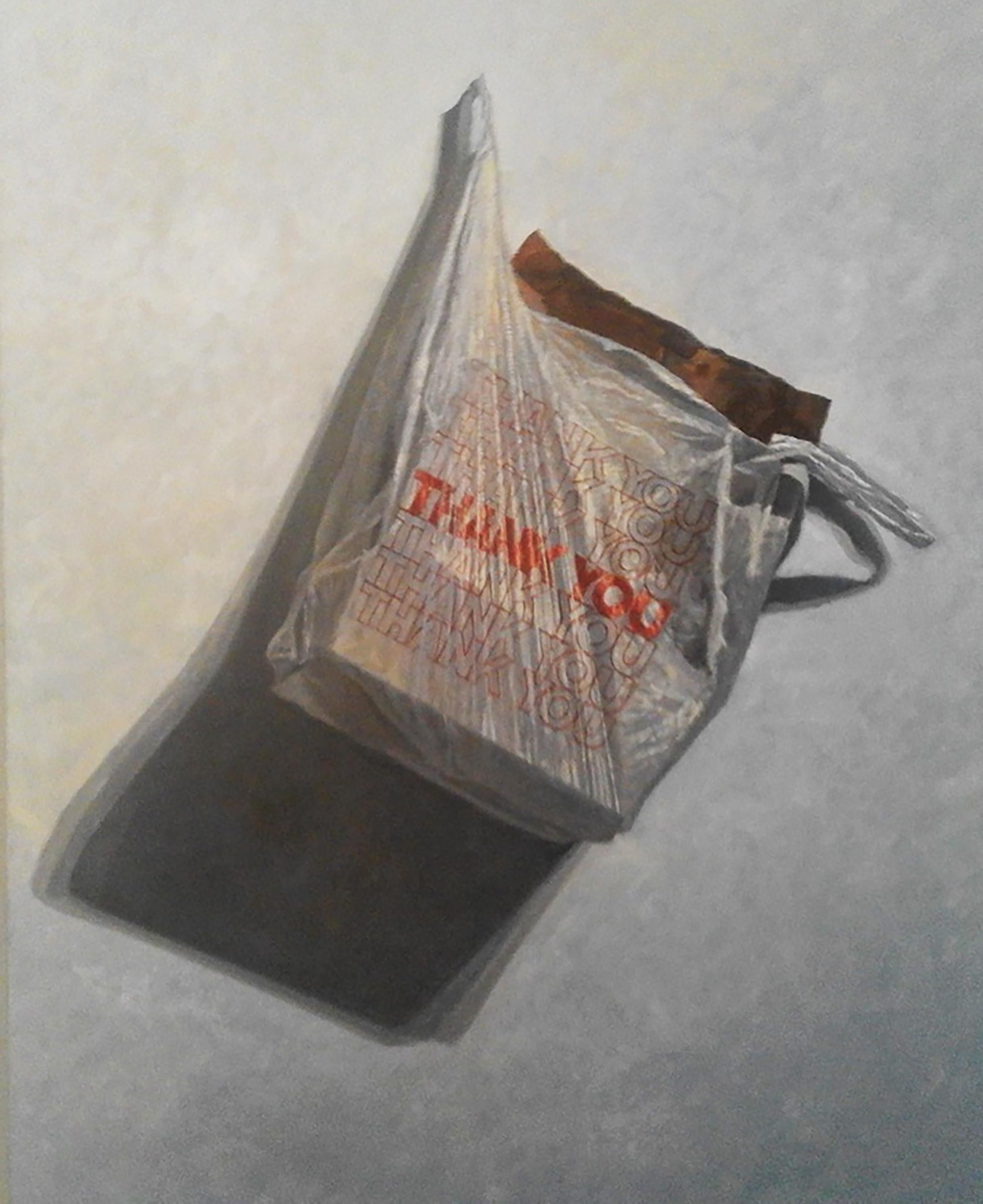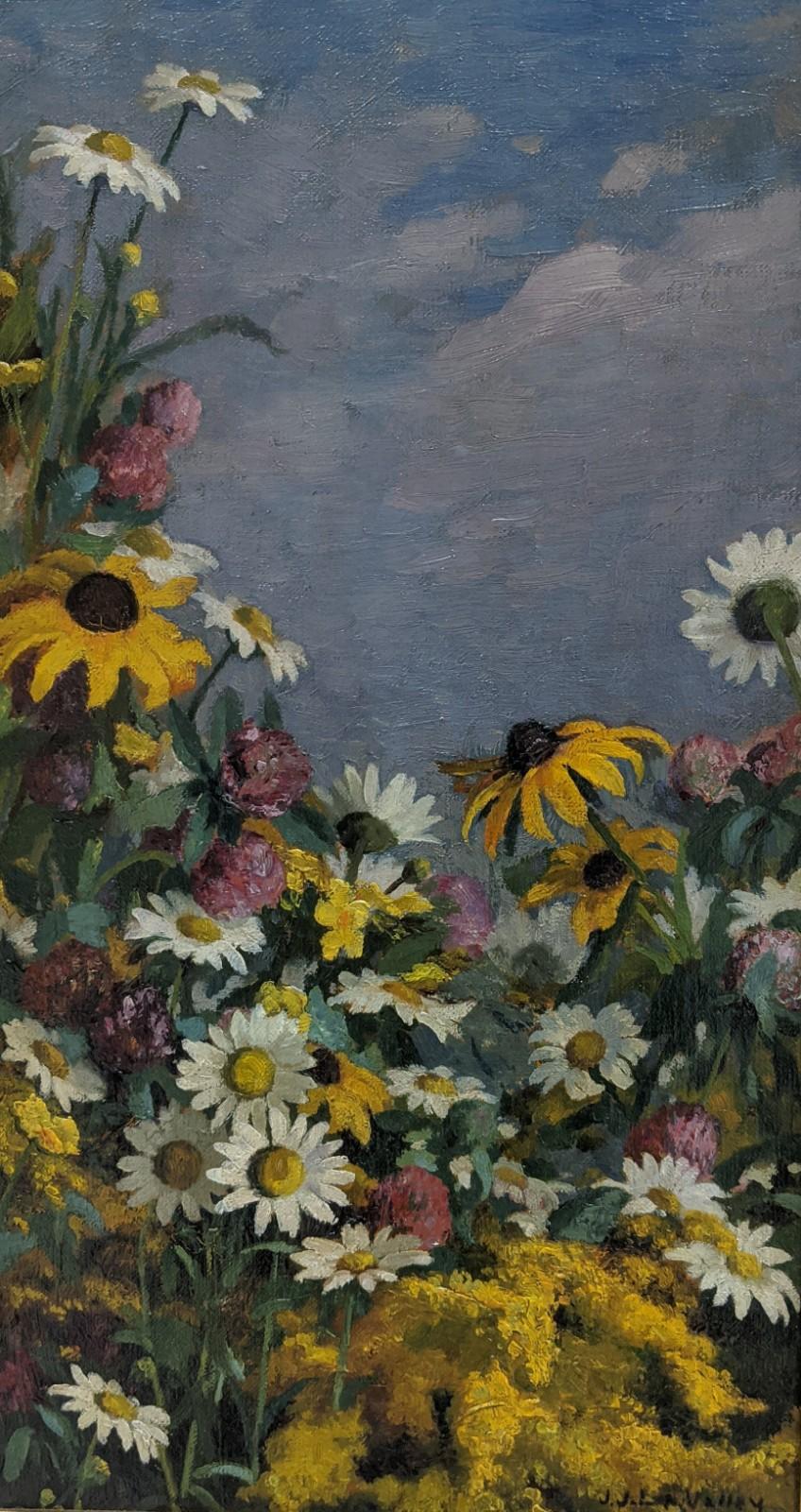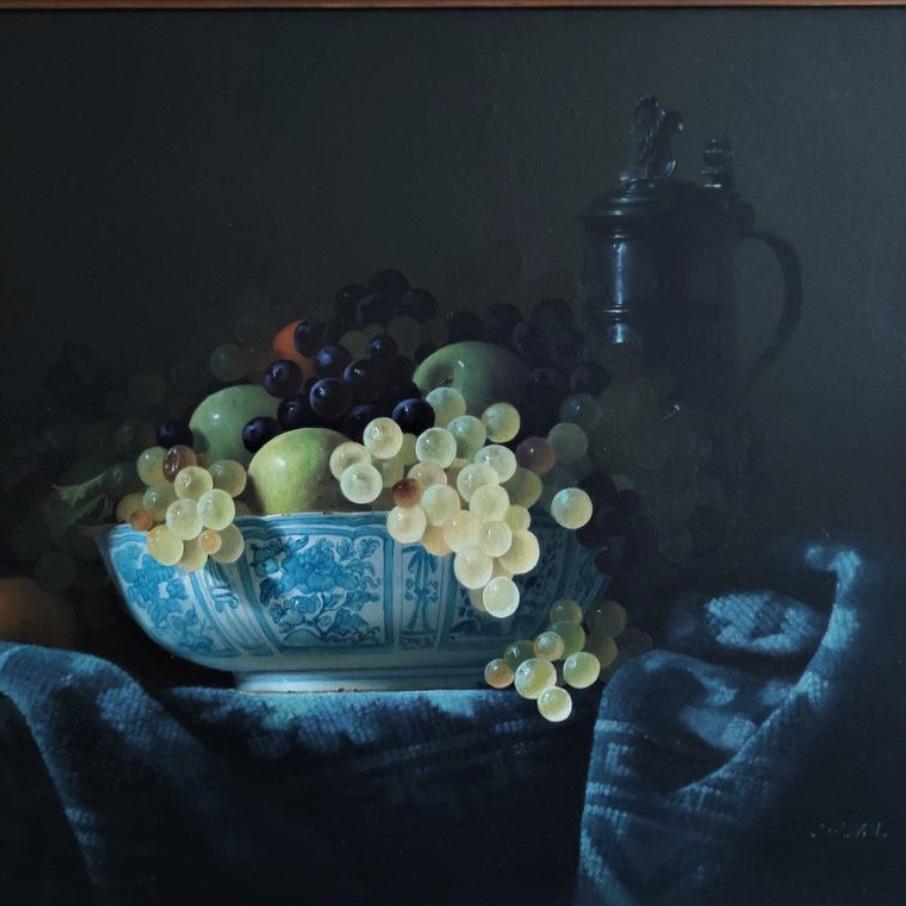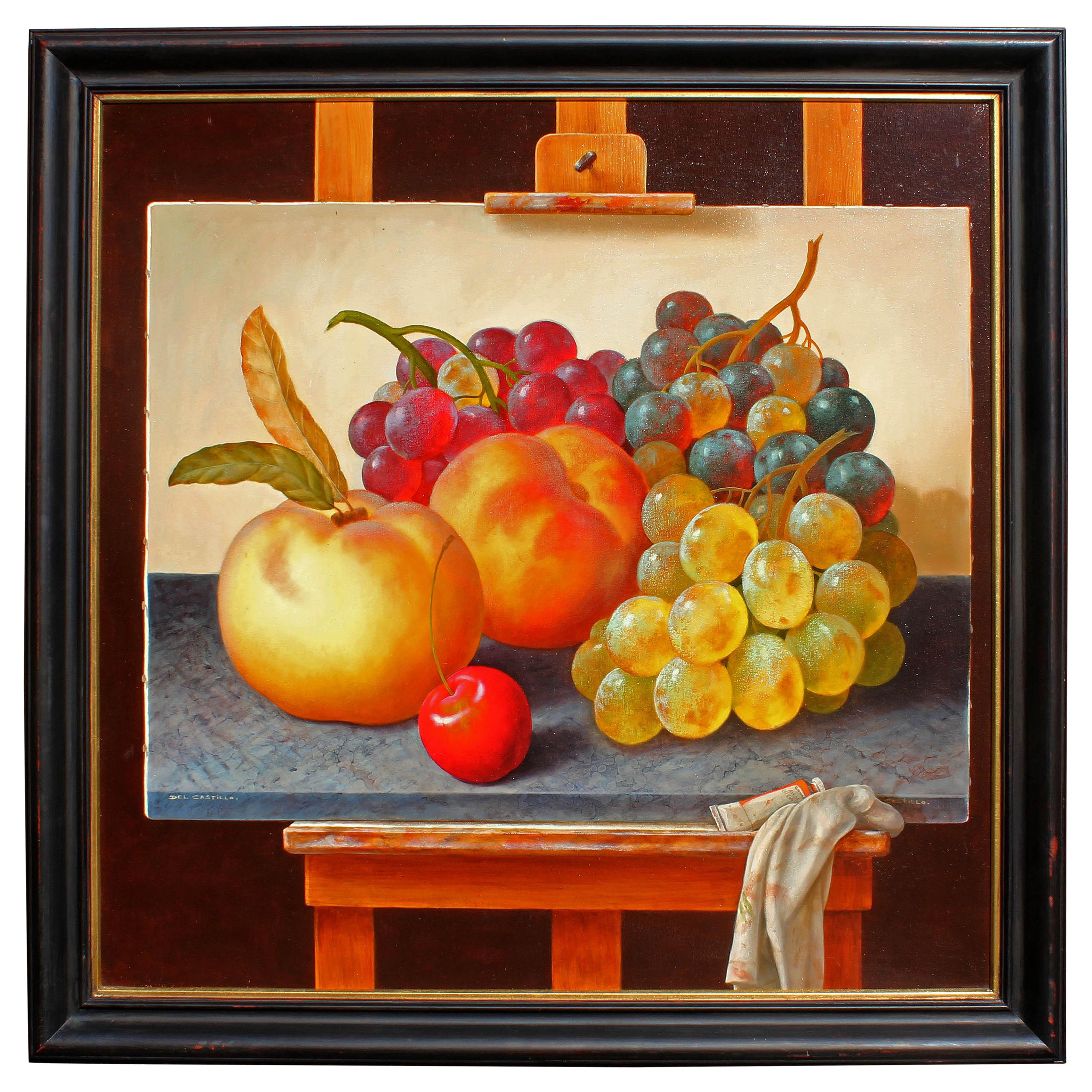Claude BuckDaisies in a Jug, Early 20th Century Realist Floral Still-Life by Claude Buck1929
1929
About the Item
- Creator:Claude Buck (1890 - 1974, American)
- Creation Year:1929
- Dimensions:Height: 24.5 in (62.23 cm)Width: 20.5 in (52.07 cm)Depth: 2.75 in (6.99 cm)
- Medium:
- Movement & Style:
- Period:
- Condition:Antique frame may shows signs of wear consistent with age and use. Minor cosmetic issues will be minimized, but may not be restored to original condition. New hanging hardware installed.
- Gallery Location:Soquel, CA
- Reference Number:
Claude Buck
Claude Buck was born in New York City on July 3, 1890. He began his artistic studies at the National Academy of Design and was taught by artists including Emil Carlsen, George de Forest Brush, Francis Jones and Kenyon Cox. Later, he traveled to Munich for a period of study. Upon his return, he began a busy schedule of exhibitions.
Claude Buck was a leading member of the avant-garde Symbolism artists’ movement in Chicago. He moved there from his birthplace New York City in 1919. Buck was known for his "fantastic, sometimes disturbing images with allegorical and literary themes" (Kennedy 97) drawn from writings of Edgar Allan Poe, operas by Richard Wagner, classical mythology and "New Testament" writings from the Bible. In the 1920s, to earn money by gaining public favor and also expressing his increasing disdain for modernism, Buck did a number of hyperrealist portraits, figures and still lifes. These proved popular and aligned him with the opponents of abstraction and their Society for Sanity in Art movement, whose headquarters were in Chicago. Buck taught drawing and painting at the Chicago Academy For the Arts from 1921–26 and at the Art Institute, where he took over classes of George Bellows.
In New York City before coming to Chicago, Buck had a reputation as a radical artist. He took his first art training from his father, William R. Buck, from the time he was aged 3 to 14, and then until he was 22, he studied at the National Academy of Design, where he was nicknamed "Kid Hassam" because his painting reminded viewers of that of Claude Hassam. Buck worked as a scene painter in the theatre and at the Willet Stained Glass Company and began portrait commissions in 1914 to earn money. In New York, he founded a group named the "Introspectives," which reflected his own problems with melancholy during that period. Members holding their first exhibition at the Whitney Studio in 1917 were artists who expressed their personal feelings and experiences and included Raymond Jonson and Emil Armin. In this phase of his career. Buck was focused on Old World styles of Leonardo da Vinci, Ralph Albert Blakelock and Albert Pinkham Ryder. In 1929, the Arts Council of New York voted him one of the top 100 painters in the United States. In 1949, Buck and his wife Leslie moved to California to a studio-home in the Santa Cruz Mountains and ten years later, they settled in Santa Barbara where he died on August 4, 1974. In California, he was a member of the Carmel Art Association, the Santa Cruz Art League that he served as President in 1953 and the Santa Barbara Art Association.
Although Buck spent the last years of his life in Santa Cruz, California and was considered a California artist, his work also reflected the formal New York and Munich training he received at the beginning of his career. He also was a painting instructor at the Studio School of Art in Chicago for some years and was a member of Chicago Galleries Association, Society for Sanity in Art and Grand Central Art Gallery.
(Biography provided by Robert Azensky Fine Art)- ShippingRetrieving quote...Ships From: Soquel, CA
- Return PolicyA return for this item may be initiated within 14 days of delivery.
- Vibrant Spring Bulb Still LifeLocated in Soquel, CAVibrant mixed spring bulb flower still life oil painting by an unknown artist. Present in a giltwood frame. Unsigned. Image size, 24"H x 18"L.Category
1970s Realist Still-life Paintings
MaterialsCanvas, Oil
- 1940s Tromp L'oeil Still Life Rose and Amaranth in AlcoveLocated in Soquel, CAWonderful rose and amaranth still life in an alcove by Riverda Kapunas (American/Greek, 20th century), 1943. Signed and dated lower right corner. Unframed.Category
1940s Realist Still-life Paintings
MaterialsCanvas, Oil, Cardboard
- Mid Century Meadow Wildflowers Still-LifeLocated in Soquel, CAExquisite floral still life of wild meadow flowers by Anna Westphal (Denmark, 1858-1950). Signed "A. Westphal" and dated "1937" lower right. Presented in...Category
1930s Realist Still-life Paintings
MaterialsCanvas, Oil
- Mid Century Still-Life with Grapes, Copper Vessel & WineBy Manuel Ventura MillánLocated in Soquel, CASoft and realistic mid century still life of a basket overflowing with clusters of ripe grapes, beside a copper vessel and a glass of white wine, by Manuel Ventura...Category
Mid-20th Century Realist Still-life Paintings
MaterialsCanvas, Oil
- Mid Century Still-Life with Sculpture of Young BoyBy Leila SullivanLocated in Soquel, CAExceptionally realistic still life of a bust of a young fisherman in the style of Claude Buck by Leila Sullivan (American, 1903-1998), who studied with Claude Buck for 5 years and Ma...Category
Mid-20th Century Realist Still-life Paintings
MaterialsCanvas, Oil, Cardboard
- Southwest Zuni Pottery Still Life by AmarantaLocated in Soquel, CABeautifully executed realistic Southwestern still life of traditional Native American pottery, with a patterned textile, feather, and ear of red corn, by an unknown artist (20th cent...Category
Late 20th Century Realist Still-life Paintings
MaterialsCanvas, Acrylic
- Chani Cohen Zada, "Afterbirth" , 2018 oil on canvas 100 x 100 cm 39 x 39 inBy Chani Cohen ZadaLocated in Jerusalem, ILChani Cohen Zada Afterbirth , 2018 oil on canvas 100 x 100 cm 39 x 39 in Exhibited: 'Between Holy and Mundane', Lewinski College, Tel Aviv. Israel 11.1-...Category
2010s Realist Still-life Paintings
MaterialsCanvas, Oil
- Thanks for NothingBy Eric ForstmannLocated in Washington Depot,, CTSocial commentary by the artist, Eric Forstmann, about how these bags are not good for the environment.Category
2010s Realist Still-life Paintings
MaterialsOil, Canvas
- Under Summer SkiesLocated in Greenville, DELaValley is an American artist born in New York in 1858. His style is realism and most of his paintings were either landscapes or still lifes. This perticular painting is an exclent ...Category
19th Century Realist Still-life Paintings
MaterialsCanvas, Oil
- Still life with a Chinese bowl by Jean GrimalBy Jean GrimalLocated in Gent, VOVJean Grimal is a true 20th century discovery. This breathtaking piece is a gorgeous example of his mastery as an artist. He beautifully creates chiaroscuro in this painting. The way the light touches the edges of the Chinese bowl and the grapes is an example of his skill in representing light. Jean Grimal (1942-1998) was born in the town of Tulle, France in 1942. Jean’s family moved to Paris when he was 8 years of age. After receiving a classical French education with studies in Latin and Greek, Jean Grimal entered the University to receive his Baccalaureate. He then attended Claude Barnard School for three years, when he received his Art Degree. Upon completion Grimal taught art for seven years. As Grimal’s own interest in formal painting and art began to possess him, the artist’s destiny changed. In 1967 Jean Grimal stepped aside from teaching and pursued a career in professional painting and working as an illustrator in advertising. As an advertising illustrator, Grimal worked with Lise Goldfard for more than 25 years at Studio 44 where they collaborated with major and important accounts, such as: Air France, Christofle, Peugeot, Lacoste, to name a few. At the same time he began presenting his formal paintings to galleries in Paris and Cannes, France and in London and Windsor, England. Much to his surprise, Grimal found that his paintings were sought after by major art galleries and collectors throughout Europe. After a number of years of being an important and successful art illustrator for these major accounts, he found himself having to choose between the two. Fortunately for collectors, he chose to dedicate his life to the classical style of painting. Jean looked at the simplest things in life through a microscope, where he could take the simplest object and depict the age of the fruit or the leaf. Jean Grimal received great pleasure from his work and painted for over thirty years. As his style matured and became ever more perfect Jean Grimal truly reached the pinnacle of his career. The artist’s methods were particularly distinguished when measured against his peers. Grimal’s painting skill was distinctive and exceptional. Jean Grimal was known for his realistic trompe l’oeil and still life paintings. The artist would carefully arrange the objects to form a satisfying composition. By painting every shadow, highlight, and reflection within each composition Grimal brought mundane subjects to life. His tight rendering combined with his attention to light and detail allowed him to blur the lines between illusion and reality, truly making his works one of a kind. Grimal’s trompe l’oeil paintings consist of intricate compositions of cards, envelopes, photographs, paper of different materials and weights, backs of canvases, images of other artists’ works, kitchen utensils, pistols, and more. Grimal had a talent for mastering these illusions that deceive the eye in his trompe l’oeil paintings. No matter what genre Grimal was painting, tight, unperceivable brushwork characterizes his work. The artist painted every crease and crinkle, every shadow and highlight, every detail. By doing so, he was able to capture each individual surface texture of the objects in his paintings. Grimal was also fabulous at depicting light in his paintings- often contrasting strong lights with strong darks, creating chiaroscuro modeling. His still life paintings are reminiscent of Dutch seventeenth century...Category
Late 20th Century Realist Still-life Paintings
MaterialsCanvas, Oil
- Large Surreal Latin American Oil PaintingLocated in Rochester, NYSurreal hyper realistic trompe l'oeil oil painting by Latin American artist Victor Del Castillo. Peaches, grapes and cherries in rich brilliant colors and incredible detail. Measures...Category
Late 20th Century Realist Still-life Paintings
MaterialsCanvas, Oil
- Vase Of OrchidsBy Albert BenaroyaLocated in Jerusalem, ILoriginal oil on canvas painting , hand paintedCategory
21st Century and Contemporary Realist Still-life Paintings
MaterialsCanvas, Oil





